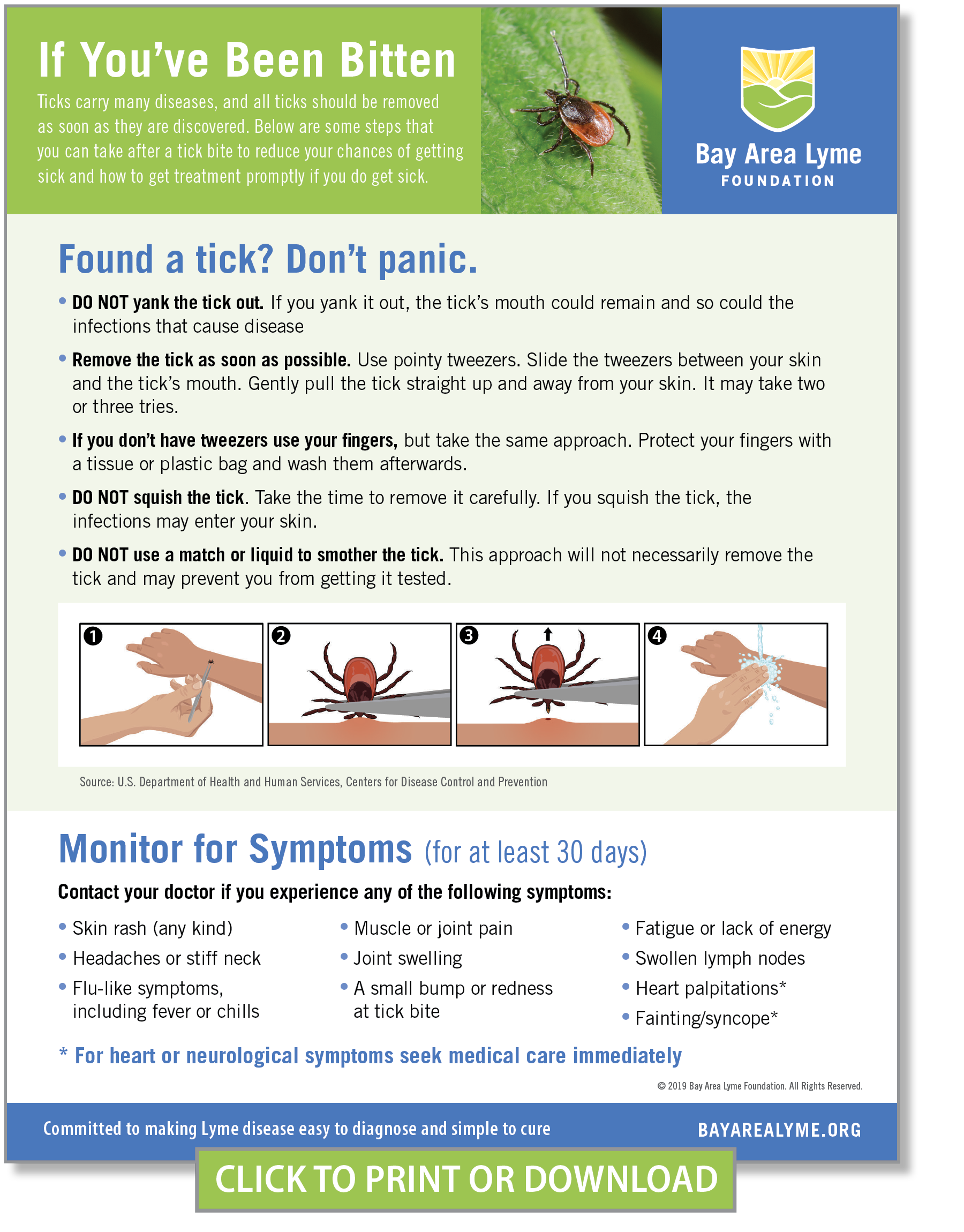Ticks carry many diseases, and all ticks should be removed as soon as they are discovered. Click the image below for a 2-page flyer with some steps that you can take after a tick bite to reduce your chances of getting sick and what symptoms to monitor for. On page 2 you’ll learn about important tips for tick-bite prevention. Spanish version also available (click here).
This informative flyer is also available in Spanish. Click here to view, print or download.
Found a tick? Don’t panic.
- DO NOT yank the tick out. If you yank it out, the tick’s mouth could remain and so could the infections that cause disease
- Remove the tick as soon as possible. Use pointy tweezers. Slide the tweezers between your skin and the tick’s mouth. Gently pull the tick straight up and away from your skin. It may take two or three tries.
- If you don’t have tweezers use your fingers, but take the same approach. Protect your fingers with a tissue or plastic bag and wash them afterwards.
- DO NOT squish the tick. Take the time to remove it carefully. If you squish the tick, the infections may enter your skin.
- DO NOT use a match or liquid to smother the tick. This approach will not necessarily remove the tick and may prevent you from getting it tested.
- Clean bite area with antiseptic or soap and water
- Place the tick in a ziplock bag and consider getting it tested. Click here for more info.
Monitor for Symptoms (for at least 30 days)
Contact your doctor if you experience any of the following symptoms:
- Skin rash (any kind)
- Headaches or stiff neck
- Flu-like symptoms, including fever or chills
- Muscle or joint pain
- Joint swelling
- A small bump or redness at tick bite
- Fatigue or lack of energy
- Swollen lymph nodes
- Heart palpitations*
- Fainting/syncope*
* For heart or neurological symptoms seek medical care immediately
Download our printable PDF of Lyme Symptoms for your reference—provided in English and Spanish.
